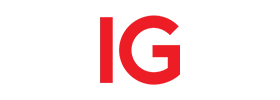The Dow Jones Industrial Average (DJIA), also known as Dow Jones, stands as one of the most widely recognized stock market indices globally. Its historical importance and steady performance make it a key focus for traders and investors alike. This comprehensive guide provides essential information about Dow Jones trading brokers and how to begin trading this renowned index.
Below you can find a list with the best Dow Jones Index CFD Brokers:
Top 9 Brokers for trading Dow Jones (US30)
-
FP Markets
- Australia and CySEC regulated broker
- MT4/MT5, TradingView, Ctrader, Iress
- EUR/USD spread from 0.0 pips
Trading InstrumentsDeposit Methods- Commodities CFDs
- Crypto CFDs
- Energy CFDs
- Forex CFDs
- Indices CFDs
- Metals CFDs
- Stock CFDs
-
Plus500
- Multi-Level Regulated Broker
- Proprietary trading platforms
- Easy to use mobile app
Trading InstrumentsDeposit Methods- Commodities CFDs
- Crypto CFDs
- Energy CFDs
- ETF CFDs
- Forex CFDs
- Indices CFDs
- Metals CFDs
- Share CFDs
- Stock CFDs
- US Stock CFDs
-
ActivTrades
- Winner of 20+ Global Awards
- MT4/MT5, TradingView
- Leverage up to 1:400
Trading InstrumentsDeposit Methods- Bonds CFDs
- Commodities CFDs
- Crypto CFDs
- ETF CFDs
- Forex CFDs
- Indices CFDs
- Share CFDs
-
IG
- Offers different account types, including DMA (Direct Market Access) one
- Offers turbo warrants on forex pairs, commodities, indices, and equities
- Supports popular platforms like MT4 and TradingView as well as ProRealTime, L2, and more
Trading InstrumentsDeposit Methods- Bond Futures
- Bond Options
- Bond Spread Betting
- Bonds CFDs
- Commodities CFDs
- Commodity Futures
- Commodity Options
- Commodity Spread Betting
- Crypto CFDs
- Crypto Options
- Crypto Spread Betting
- Currency Futures
- Energy CFDs
- Energy Futures
- Energy Options
- Energy Spread Betting
- ETF CFDs
- ETF Options
- ETF Spread Betting
- Forex CFDs
- Forex Options
- Forex Spread Betting
- Index Futures
- Index Options
- Index Spread Betting
- Indices CFDs
- Interest Rate Futures
- Metal Futures
- Metal Options
- Metals CFDs
- Metals Spread Betting
- Share CFDs
- Stock CFDs
- Stock Options
- Stock Spread Betting
- US Stock CFDs
- US Stock Options
- US Stock Spread Betting
-
eToro
- Popular broker for social trading
- Trading is conducted on innovative in-house platform
- Offers both investing and trading products
Trading InstrumentsDeposit Methods- Commodities CFDs
- Crypto CFDs
- ETF CFDs
- Forex CFDs
- Indices CFDs
- Metals CFDs
- Share CFDs
- Stock CFDs
- US Stock CFDs
-
FXTM
- Established brokerage company regulated by UK FCA, Kenya CMA, and Mauritius FSC
- MT4, MT5, Mobile Trading Platform
- $1M Lloyd’s of London account insurance
Trading InstrumentsDeposit Methods- Commodities CFDs
- Crypto CFDs
- Forex CFDs
- Indices CFDs
- Metals CFDs
- Stock CFDs
-
XM Group
- XM provides great trading experiences using MetaTrader 4 and MetaTrader 5, which are improved by personalized features.
- Zero commission accounts are available
- Top-tier regulation from CySEC, ASIC, FSC, and DFSA oversee XM's operations, assuring transparency and client safety.
Trading InstrumentsDeposit Methods- Bonds CFDs
- Commodities CFDs
- Crypto CFDs
- Energy CFDs
- ETF CFDs
- Forex CFDs
- Forex Options
- Index Options
- Indices CFDs
- Metals CFDs
- Share CFDs
- Stock CFDs
- Stock Options
- US Stock Options
-
AvaTrade
- Minimum deposits from $100
- Licensed by 11 regulatory bodies
- Retail forex leverage of up to 1:400
Trading InstrumentsDeposit Methods- Bonds CFDs
- Commodities CFDs
- Crypto CFDs
- Crypto Options
- Energy CFDs
- ETF CFDs
- Forex CFDs
- Forex Options
- Index Options
- Indices CFDs
- Metals CFDs
- Share CFDs
- Stock CFDs
- Stock Options
- US Stock Options
-
FxPro
- NDD broker offering deep liquidity and ultra-fast execution
- Over 99% instant order executions with no requotes
- Supports MT4, MT5, cTrader, and a proprietary platform
Trading InstrumentsDeposit Methods- Commodities CFDs
- Crypto CFDs
- Energy CFDs
- Forex CFDs
- Indices CFDs
- Metals CFDs
- Stock CFDs
Brokers Compared by Spread
| Brand | Commission per lot | |
|---|---|---|
| FP Markets | AVG 1.2 pips | $0 Standard Account; $6 round turn on Pro Account |
| Plus500 | AVG 1.4 pips | $0 |
| ActivTrades | AVG 0.5 pips | $0 |
| IG | MIN 0.6 pips | $0 |
| eToro | AVG 1 pips | $1 or $2 (stocks only) |
| FXTM | AVG 2.1 pips | $4 per lot |
| XM Group | AVG 1.2 pips | $0 Ultra Low Micro and Ultra Low Standard Accounts; $3.50 per side XM Zero Account |
| AvaTrade | AVG 0.8 pips | $0 |
| FxPro | AVG 1.5 pips | $0 on Standard Account; $3.5 per side on Raw+ and Elite Accounts |
FX Brokers Deposit Method Comparison
| Brand | Minimum deposit | |
|---|---|---|
| FP Markets | $50 (AU$100) | |
| Plus500 | $100 | |
| ActivTrades | $0 | |
| IG | $50 | |
| eToro | $50 or $100 based on country ($10 for the UK) | |
| FXTM | $200 | |
| XM Group | $5 | |
| AvaTrade | $100 | |
| FxPro | $100 |
Brokers by Regulator
| Brand | Maximum leverage | |
|---|---|---|
| FP Markets | 1:500 (CySEC | Pro Account), 1:30 (ASIC | Retail Account), 1:30 (CySEC | Retail Account), 1:500 (FSAS | Retail Account) | |
| Plus500 | 1:300 (Pro Account), 1:30 (ASIC | Retail Account), 1:30 (BaFin | Retail Account), 1:30 (CySEC | Retail Account), 1:30 (FCA | Retail Account), 1:30 (FMA | Retail Account), 1:30 (SFSA | Retail Account), 1:30 (DFSA), 1:300 (FSAS), 1:20 (MAS), 1:300 (SCB) | |
| ActivTrades | 1:400 (CMVM | Pro Account), 1:30 (CMVM | Retail Account), 1:1000 (FSC), 1:200 (SCB) | |
| IG | 1:222 (BaFin | Pro Account), 1:30 (ASIC | Retail Account), 1:30 (BaFin | Retail Account), 1:200 (BMA | Retail Account), 1:30 (FCA | Retail Account) | |
| eToro | 1:400 (CySEC | Pro Account), 1:30 (CySEC | Retail Account), 1:400 (FSAS | Retail Account) | |
| FXTM | 1:30 (FCA | Retail Account), 1:400 (CMA), 1:3000 (FSCA) | |
| XM Group | 1:30 (CySEC | Retail Account), 1:1000 (IFSC | Retail Account) | |
| AvaTrade | 1:400 (Pro Account), 1:30 (Standard Account) | |
| FxPro | 1:30 (CySEC | Retail Account), 1:30 (FCA | Retail Account), 1:10000 (SCB | Retail Account) |
Forex Brokers Platform Availability
| Brand | FX pairs to trade | |
|---|---|---|
| FP Markets | cTrader, TradingView | |
| Plus500 | Proprietary Mobile, Proprietary Web | |
| ActivTrades | MetaTrader 4, MetaTrader 5, Proprietary Web, TradingView | |
| IG | MetaTrader 4, Proprietary Web, TradingView | |
| eToro | Proprietary | |
| FXTM | MetaTrader 4, MetaTrader 5 | |
| XM Group | MetaTrader 4, MetaTrader 4 MultiTerminal, MetaTrader 5, Proprietary Mobile, Proprietary Web | |
| AvaTrade | MetaTrader 4, MetaTrader 5, Proprietary Web | |
| FxPro | cTrader, MetaTrader 4, MetaTrader 5 |
Comprehensive Comparison of the Best CFD Brokers for Dow Jones trading
Understanding the Dow Jones Industrial Average (DJIA)
The Dow Jones Industrial Average is a benchmark index that tracks 30 major publicly traded companies in the United States. First introduced in 1896, the DJIA is not just a measure of stock performance but a reflection of the broader U.S. economy.
Key Details About the Dow Jones
-
When Was the Index Introduced?
Dow Jones was created by Charles Dow and Edward Jones on May 26, 1896. Initially, it included 12 industrial companies and later expanded to 30 constituents in 1928.
-
What Type of Index Is It?
The Dow Jones is a price-weighted index, differing from capitalization-weighted indices like the S&P 500.
-
Biggest Constituent Companies
Notable companies in the DJIA include:
- Apple Inc.
- Microsoft Corporation
- Boeing Co.
- Johnson & Johnson
- Goldman Sachs
- Selection Criteria for Constituents
Companies are chosen based on their industry leadership, reputation, and contribution to the U.S. economy. The index avoids high levels of sectoral concentration.
Ways to Trade the Dow Jones Index
Traders have various avenues to engage with the Dow Jones, each offering unique benefits and risks. Here are the most common methods:
-
CFDs on Dow Jones
Contracts for Difference (CFDs) allow traders to speculate on the price movements of the Dow without owning the underlying stocks. CFDs are popular for their leverage options, enabling traders to amplify their positions with relatively small capital. They also provide the ability to short the index, allowing traders to profit from both rising and falling markets. However, leverage magnifies both potential gains and losses, making risk management essential.
- Exchange-Traded Funds (ETFs)
ETFs track the performance of the index. They are an excellent option for investors seeking diversified exposure to the Dow. ETFs can be bought and sold on stock exchanges, making them highly liquid and accessible. They also typically have lower expense ratios compared to mutual funds, making them cost-effective for long-term investors.
- Index Futures Contracts
Futures contracts enable traders to buy or sell the Dow at a predetermined price on a specified future date. These contracts are typically used by institutional investors and experienced traders due to their complexity and the need for substantial capital. Futures are highly leveraged instruments, allowing traders to control large positions with a fraction of the total contract value. They are often used for hedging or speculative purposes.
- Index Options
Options provide the right, but not the obligation, to buy or sell the Dow at a specific price before the expiration date. They are versatile tools often used for hedging risk or taking speculative positions with limited downside risk. Traders can use call options to benefit from upward movements or put options to profit from declines. The flexibility of options allows traders to implement various strategies, such as straddles or spreads, to navigate different market conditions.
- Mutual Funds
Mutual funds that track the Dow are designed for long-term investors seeking diversified exposure to blue-chip stocks. These professionally managed funds pool capital from multiple investors to purchase a portfolio of stocks that mirrors the index. While mutual funds are less flexible than ETFs due to their trading restrictions (usually priced once a day), they offer the advantage of professional management and are ideal for investors with a buy-and-hold approach.
Each trading method has its own set of advantages and drawbacks. Whether you prefer the high leverage of CFDs and futures or the stability and simplicity of ETFs and mutual funds, selecting the right instrument depends on your trading goals, risk tolerance, and market expertise.
Trading Hours for the Dow Jones Index
The Dow Jones follows the trading hours of the New York Stock Exchange (NYSE) and NASDAQ:
- Regular Trading Hours: Monday to Friday, 9:30 AM to 4:00 PM (Eastern Time).
- Pre-Market Trading: 4:00 AM to 9:30 AM (Eastern Time).
- After-Hours Trading: 4:00 PM to 8:00 PM (Eastern Time).
Extended trading hours offer additional flexibility but come with reduced liquidity and increased volatility.
Factors Influencing the Dow Jones Performance
The performance of the Dow Jones Industrial Average is shaped by a wide range of economic, corporate, and global influences. Traders must understand these dynamics to anticipate potential market movements effectively. Here are the key factors influencing the performance of Dow Jones:
- Economic Indicators
Macroeconomic metrics such as Gross Domestic Product (GDP) growth, employment rates, and consumer confidence reports can significantly impact investor sentiment. Positive indicators often lead to upward trends, while negative reports can cause declines.
- Federal Reserve Policies
Decisions by the Federal Reserve on interest rates and monetary policy play a critical role in shaping market trends. For instance, interest rate hikes can dampen equity markets as borrowing costs rise, while rate cuts may stimulate growth and boost the Dow.
- Corporate Earnings Reports
The quarterly earnings results of companies listed on the Dow have a direct influence on the index’s performance. High earnings can drive share prices higher, while unsatisfactory results may lead to declines. Seasonal trends, such as earnings season, are particularly impactful.
- Global Events
Unforeseen global events, including geopolitical tensions, international trade negotiations, or natural disasters, can lead to significant market volatility. Events such as trade wars or global pandemics have historically caused sharp movements in the Dow.
- Sector Performance
The Dow’s composition includes companies from diverse sectors such as healthcare, technology, finance, and industrials. Fluctuations in the performance of these key sectors—whether due to technological advancements, regulatory changes, or market demand—can heavily influence the index.
- Market Sentiment
Investor confidence and market sentiment, driven by news, analyst forecasts, and broader economic outlooks, often dictate short-term movements in the Dow. Sentiment can amplify trends, either propelling gains or exacerbating losses.
By staying up to date with these factors, traders can develop strategies to better understand the difficulties of the Dow Jones market.
What to Look for When Choosing Dow Jones Brokers
Selecting the right broker is essential for successful trading. Here are the key factors to consider:
- Competitive Spreads
Spreads represent the difference between the buy and sell price of an asset. Look for brokers offering tight spreads on Dow Jones trades, as this reduces your trading costs and maximizes profit potential. Compare spreads across brokers to ensure you’re getting the best deal.
- Maximum Leverage and Margin Requirements
Leverage allows traders to control larger positions with smaller amounts of capital. While high leverage can amplify profits, it also increases risk. Understand the leverage options provided by the broker and ensure the margin requirements align with your trading strategy and risk tolerance. Look for brokers that offer flexible leverage tailored to your experience level.
- Trading Platforms
A reliable trading platform is vital for efficient trade execution. Popular platforms like MetaTrader 4 (MT4) and MetaTrader 5 (MT5) are renowned for their user-friendly interfaces and robust features, such as advanced charting tools and automated trading capabilities. Many brokers also provide proprietary platforms with unique functionalities. Test the platform’s demo version to ensure it meets your needs.
-
Regulation
Regulatory oversight ensures that brokers adhere to strict financial and operational standards. Choose brokers regulated by reputable authorities such as:
- The Securities and Exchange Commission (SEC) in the United States
- The Financial Conduct Authority (FCA) in the United Kingdom
- The Australian Securities and Investments Commission (ASIC) in Australia
Regulation provides an added layer of security for your funds and safeguards against fraudulent practices.
-
Order Execution Speed
Fast and accurate order execution is critical when trading the Dow Jones, especially during periods of high volatility. Delays can result in significant losses, particularly for short-term traders. Look for brokers with low latency and a proven track record of efficient trade execution.
-
Payment Methods
Convenience in depositing and withdrawing funds is another important factor. Choose brokers that support a variety of payment options, such as:
- Bank transfers
- Credit and debit cards
- E-wallets like PayPal, Skrill, or Neteller
Ensure the broker offers quick processing times for transactions and minimal fees.
-
Customer Support
Reliable customer service is essential for resolving any issues promptly. Choose brokers with responsive support teams available through multiple channels, such as live chat, email, and phone. Multilingual support is an added advantage for international traders.
Tips on Trading the Dow Jones Index at Online Brokers
Trading the Dow Jones requires discipline and a solid strategy. Here are some tips to help you succeed:
- Use Stop-Loss Orders – Stop-loss orders limit your losses by automatically closing a trade when it reaches a predetermined price.
- Develop a Viable Trading Strategy – Base your strategy on thorough market analysis, whether technical, fundamental, or a combination of both.
- Manage Risk Properly – Never risk more than you can afford to lose. Use risk-reward ratios and position sizing to control exposure.
- Keep a Trading Journal – Document your trades, strategies, and outcomes to identify strengths and weaknesses over time.
- Compare Spreads – Regularly compare spreads among brokers to ensure you’re getting the best deal.
Frequently Asked Questions (FAQ)
What Is the Minimum Deposit to Trade the Dow Jones?
Minimum deposit requirements vary by broker. Some brokers allow trading with as little as $100, while others may require $500 or more.
Can I Trade the Dow Jones on a Mobile App?
Yes, many brokers offer mobile apps with full trading functionality, enabling you to trade the Dow Jones on the go.
Is Trading the Dow Jones Suitable for Beginners?
The Dow Jones is beginner-friendly due to its stability and the availability of diverse trading instruments. However, it’s essential to start with a demo account and proper education.
What Is the Best Time to Trade the Dow Jones?
The best time to trade is during regular market hours (9:30 AM to 4:00 PM ET) when liquidity and volume are highest.
How Much Leverage Should I Use for Dow Jones Trading?
Leverage depends on your risk tolerance and trading experience. Beginners are advised to use lower leverage to minimize potential losses.
Why You Should Trust RationalFX
When it comes to making informed decisions about forex brokers, it's essential to rely on trustworthy sources. RationalFX, a company with over 20 years of experience since its founding in 2005, has established itself as a credible authority in the industry. With an impressive collection of over 2500 reviews on Trustpilot, boasting a score of 4.2, it's clear that Rational FX has built a reputation for providing reliable and unbiased information.
What sets Rational FX apart is its rigorous evaluation process, which considers over 30 different criteria when selecting forex brokers. This comprehensive approach ensures that every aspect of a broker's service is taken in consideration, including regulation, forex spreads, trading platforms, deposit methods, and reputation. With its wealth of experience, transparent review process, and outstanding customer feedback, Rational FX is a trusted source for anyone seeking reliable information on forex brokers. You can reach us via e-mail at feedback@rationalfx.com or contact us through our social media accounts here: Facebook, YouTube, or leave a feedback here.














